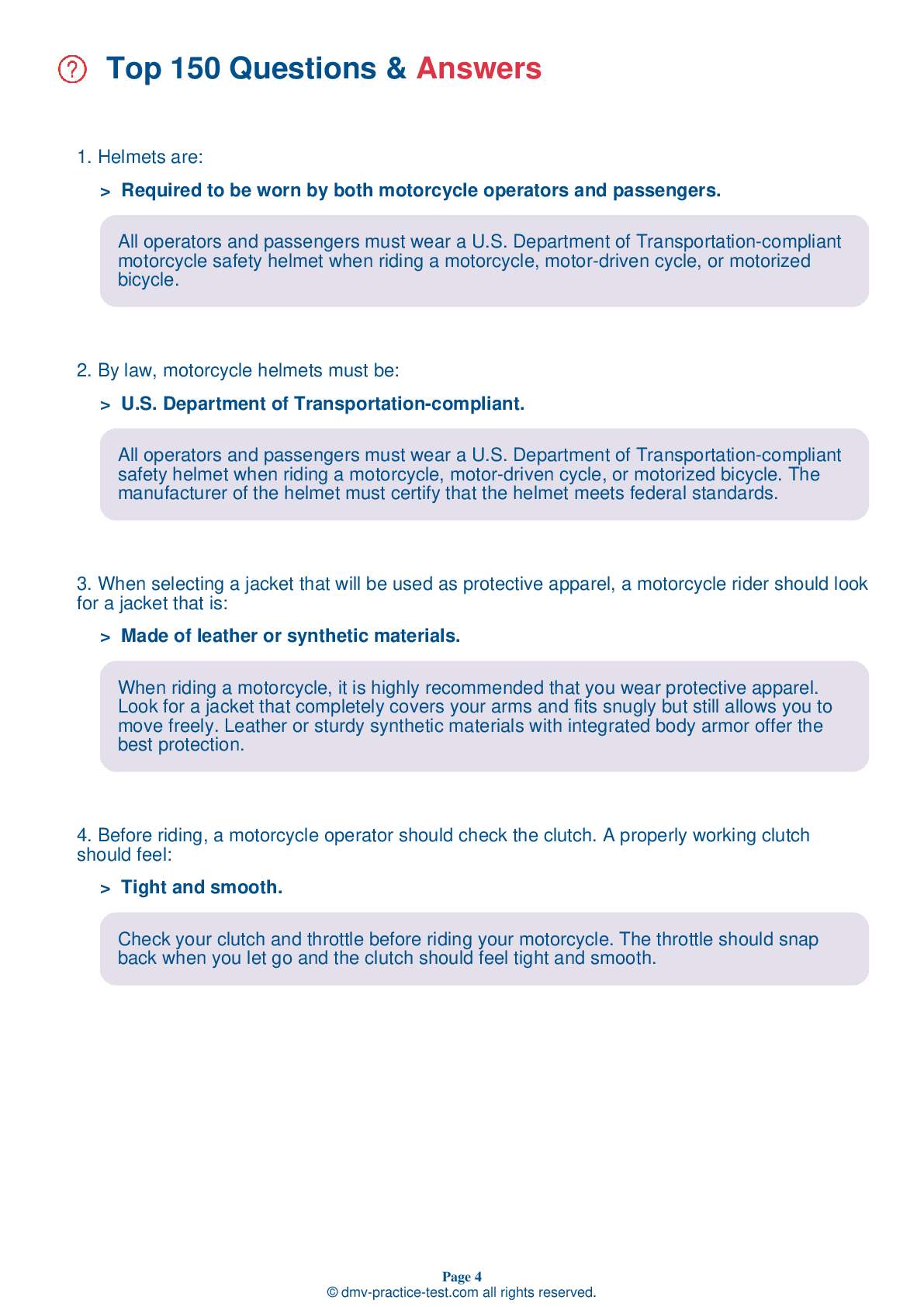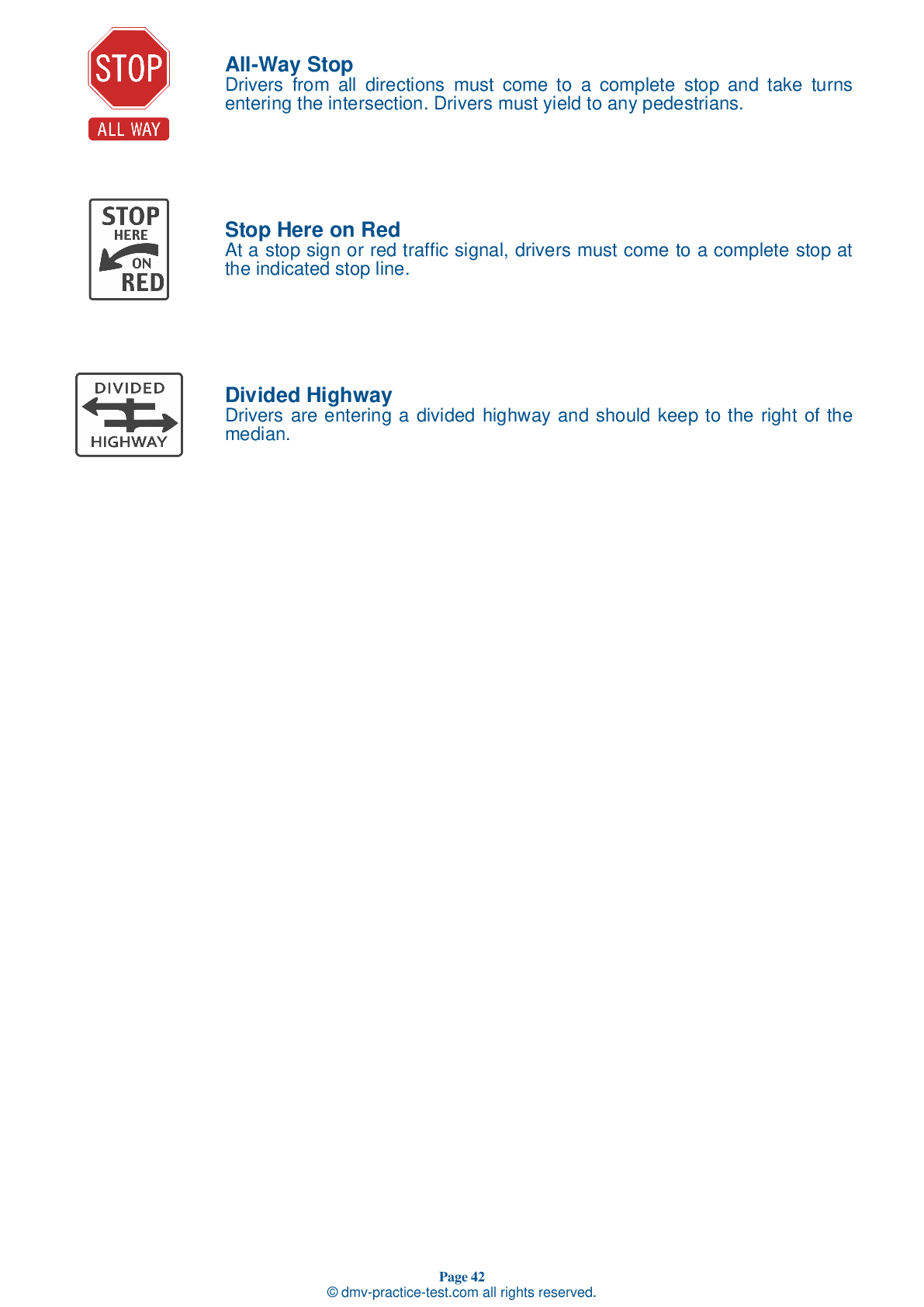Motorcycle Test | License CA 2025 | FREE Online Practice! #4 Page 4 of 4
Take this FREE motorcycle test (license in CA 2025) to check your knowledge of the road rules. To improve your results, download a motorcycle handbook online, study theory, and practice for free on our website. Still worried about how to get a motorcycle license in California in 2025? Check our website for more sample tests, train as much as possible, and boost your grades!
24 . Smaller vehicles appear to be ________ and slower than they really are.
It can be difficult to judge the speed and distance of a small vehicle, such as a motorcycle. Do not assume that drivers of larger vehicles will be able to accurately understand your speed and location.
25 . If you will be carrying a passenger on your motorcycle, you will likely have to:
Because a passenger will place additional weight on your motorcycle, you will probably need to add a few pounds of pressure to your tires before riding. Check your owner's manual for details regarding the appropriate pressure settings to use.
26 . When traveling at night, it is:
It is almost always more difficult to judge distances when traveling in the dark than it is when traveling in daylight. Shadows and light contrasts are important cues to the distance of an object. When you must rely on artificial lighting to see the roadway at night, natural contrasts and shadows may be distorted or entirely absent.
27 . Before starting a turn, a motorcyclist should change gears to:
It is best to change gears before starting a turn. Shifting gears while in the turn can cause a sudden change in power to the rear wheel, causing a skid. If you must change gears while in a turn, change gears smoothly to best prevent skidding.
28 . When cars are merging from an entrance ramp:
Always allow merging cars plenty of space and never assume that the drivers see you. Change lanes away from the entering traffic, if possible. If there is no room for a lane change, adjust your speed to allow for safe merging.
29 . Motorcycles:
A rider should always maintain a cushion of space appropriate for conditions. Motorcycles need as much room to stop as other vehicles.
30 . Of the following, which item will you not be asked to identify in a pre-trip inspection when taking the motorcycle skills test?
Before taking your skills test, you will be asked to identify your motorcycle's starter, kill switch, clutch (if applicable), throttle, gear selector, headlight dimmer switch, brakes, turn signals, and horn.
See the exact questions that will be on the 2025 California DMV exam.
99.2% of people who use the cheat sheet pass the FIRST TIME
Jeneen was tired of paying $5/gallon. She got herself a scooter that required the motorcycle license. She studyed the motorcycle test cheat sheet and passed her test the next day!
Christopher tells us how he knew nothing prior to obtaining the motorcycle study guide, and he only got one question wrong because he clicked on the wrong answer by mistake.



